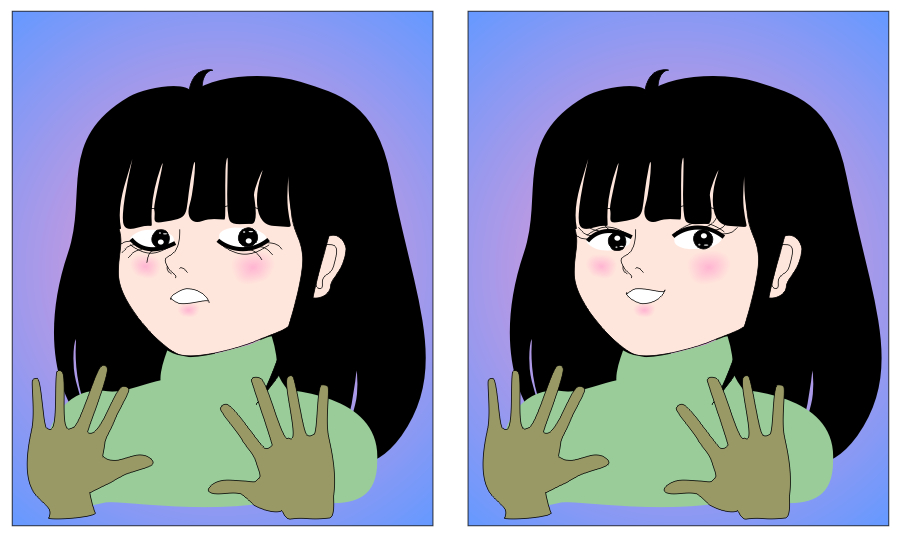Illusion of Face 4
since January 7, 2008
 (renewal)
(renewal)
"Mouth superiority effect" and "eyebrows superiority effect"
Although all eyes are identical among the images shown above, they appear to be angry (happy) if the mouth or eyebrows show an angry (happy) expression. These effects (mouth superiority effect and eyebrows superiority effect) overcome the eye superiority effect. These effects were proposed by Dr. Yoshinori Kitahara, Central Research Laboratory, Hitachi, Ltd. These image were drawn by him.
Copyright Yoshinori Kitahara 2008 (August 7)
from Yoshinori Kitahara, Tokyo, Japan, August 7, 2008
![]() The "mouth supeiority effect", more precisely "mouth superiority
effect on the apparent expression of the eyes", was first reported
by Sayako Ueda in 2007. <January 28, 2012>
The "mouth supeiority effect", more precisely "mouth superiority
effect on the apparent expression of the eyes", was first reported
by Sayako Ueda in 2007. <January 28, 2012>
Ueda, S. (2007) The recognition of happiness in the eyes: Is there a "Language of the Eyes"? Japanese Journal of Cognitive Psychology, 5, 63-69 (in Japanese with English abstract).
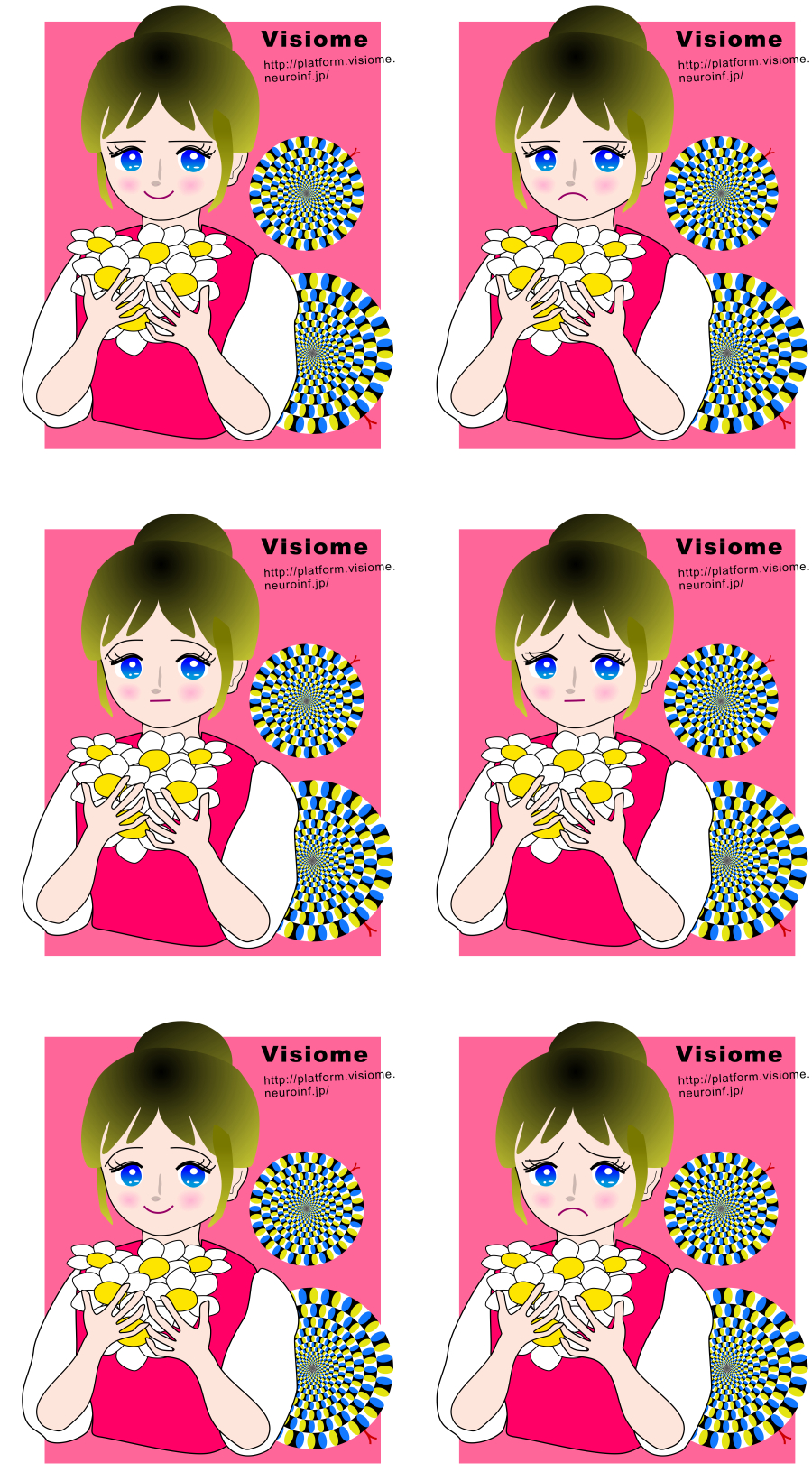
Mouth superiority effect (uppermost row), eyebrows superiority effect (middle
row) , and their additive superiority effects (lowermost row). These image
were drawn by Akiyoshi.
Copyright Akiyoshi Kitaoka 2009 (February 11)
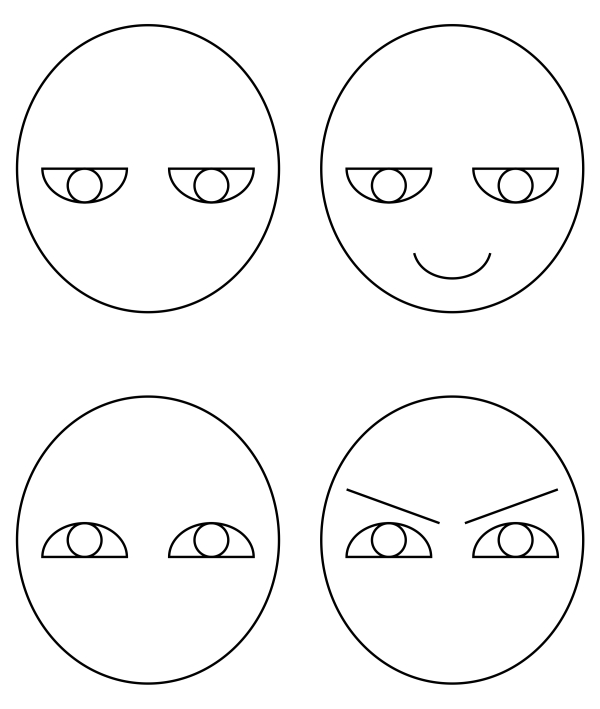
Upper row: Angry eyes appear to be happy when the mouth shows a happy expression.
Lower row: Happy eyes appear to be angry when the eyebrows show an angry
expression.
Copyright Akiyoshi Kitaoka 2009 (February 11)
"Face inversion effect is weak on the mouth superiority effect and
the eyebrows superiority effect"
It appears that the mouth superiority effect and eyebrows superiority effect (Kitahara, 2009) occur in an inverted face. This might mean that the mouth or eyebrows are analyzed by the visual system based upon the contour of a face or upon their relative positions, while the processing of eyes depends more strongly on their retinal orientation.
Copyright Akiyoshi Kitaoka 2009 (February 13)
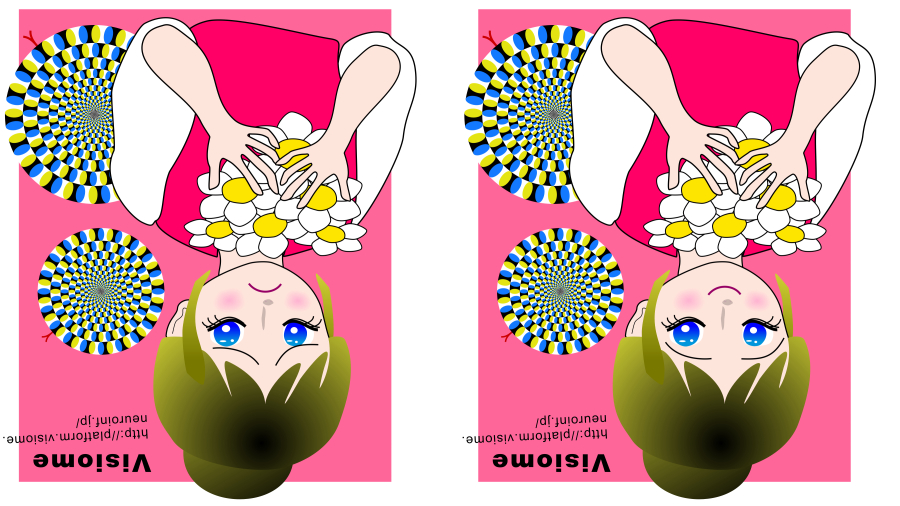

"Thatcher illusion and the mouth/eyebrows superiority effects"
It appears that the Thatcher illusion is independent of the mouth/eyebrows superiority effects. The upper image shows that upright eyes in an inverted face receive the mouth/eyebrow superiority effects, while the lower image demonstrates that inverted eyes in the upright face show a strange look (Thatcher illusion) and receive the mouth/eyebrow superiority effects as well.
Copyright Akiyoshi Kitaoka 2009 (February 13)
"Gaze illusion in upside-down images"
This image is the same if it is rotated through 180º. Although the upper person appears to gaze at the left side of the observer, the lower one appears to see the observer.
Copyright Akiyoshi Kitaoka 2008 (August 9)
"Gaze illusion in mirror images"
The right half is the mirror image of the left one. Although the left person appears to gaze at the observer, the right one appears to see the left side of the observer.
Copyright Akiyoshi Kitaoka 2008 (August 8)
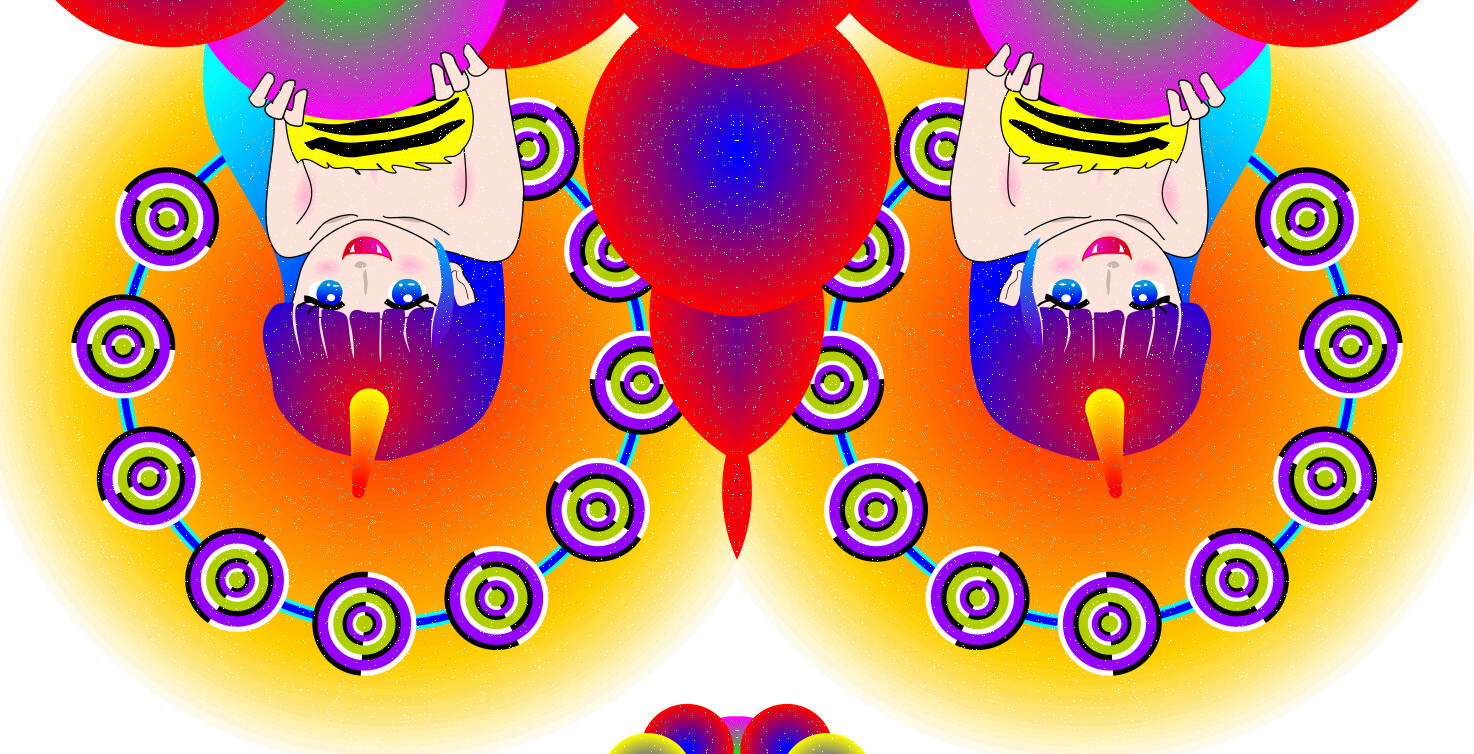
Both persons appear to see the observer when the image is inverted upside down.
This effect does not depend on size.


This effect does not always occur strongly.
e.g. 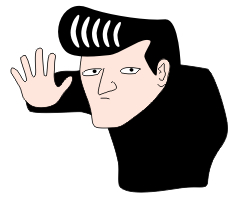 and
and 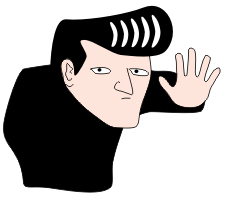
"Size illusion of oblique faces"
The right face appears to be larger than the left one, though they are the same size.
Copyright Akiyoshi Kitaoka 2008 (July 16)

The left face appears to be larger than the right one in turn, though they
are the same size.
"Samples of the 'knocked-face' illusion"
Faces appear to knock.
Copyright Akiyoshi Kitaoka 2008 (May 10)
"An illustration of the Valentine-Bruce illusion"
If the positions of eyes and the mouth are interchanged, the face appears to be funny as shown in the middle panel. When this funny face is rotated upside-down, it appears to be funny with a different impression as shown in the right panel. Demonstrating this effect, Valentine and Bruce (1985) argued against Parks (1983) who claimed the importance of the contour of a face as the frame of reference in the Thatcher illusion in which the upright face works better as the frame of reference than the inverted one.
Parks, T. E. (1983) Letters to the Editor. Perception, 12, 88.
Valentine, T. and Bruce, V. (1985) What's up? The Margaret Thatcher illusion revisited. Perception, 14, 515-516.
Copyright Akiyoshi Kitaoka 2008 (April 13)
In the Thatcher illusion as shown in the lower image, only the face shown
in the middle panel appears to be funny.
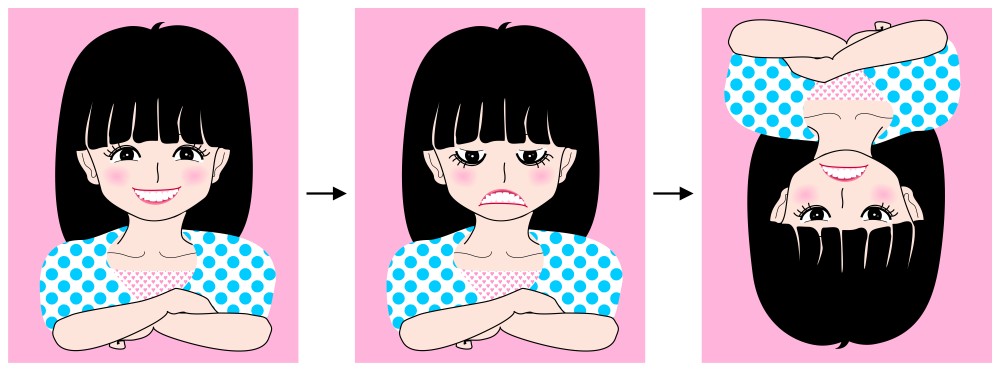
If each of eyes and the mouth is inverted as well as the positions are
interchanged, the Valentine-Bruce illusion appears to be less effective...
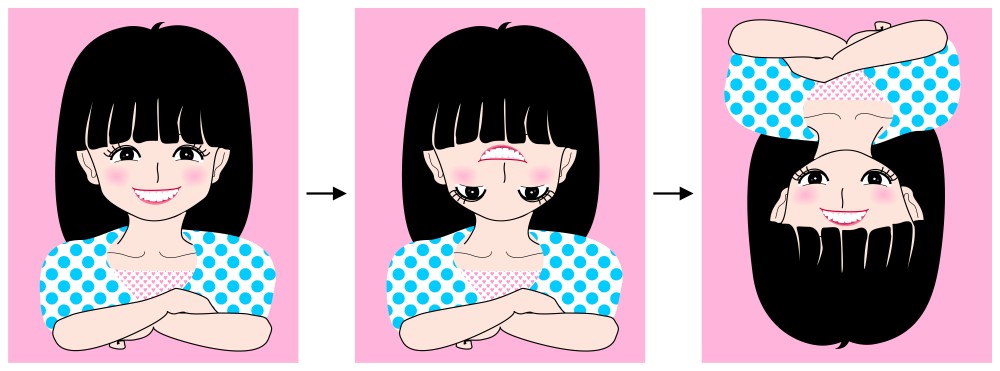
"Knocked-lips illusion"
Thick lips might appear to give a knocking appearance.
Copyright Akiyoshi Kitaoka 2008 (January 17)
"Illusion of eye direction by laying a face"
The eyes of the left image do not appear to gaze at the observer while those of the right image do, though both are the same image.
Copyright Akiyoshi Kitaoka 2008 (January 14)
"Eye size illusion"
The eyes of the left image is physically the same as those of the right image. Moreover, the left eye is the same length as the right eye. Yet, in the left image, the right eye appears to be longer than the left eye. On the other hand, in the right image, the left eye appears to be longer than the right eye. In addition, both eyes appear to be aligned horizontally in the left image, while in the right image they appear to be misaligned, i.e., the left eye appears to be higher than the right.
Copyright Akiyoshi Kitaoka 2008 (January 7)
"An illustration of the Thatcher illusion 3"
The left image shows an upside-down image of an illustration of a smiling lady. The right image is different from the left one, in which each of eyes and the mouth is inverted in the inverted face. Observers do not feel it bizarre so much, while it appears to be rather bizarre when the image is inverted and the face is upright (see below). This effect is called the Thatcher illusion (Thompson, 1980). Peter's page
Copyright Akiyoshi Kitaoka 2008 (January 7)
